City Directories and History: 1908 – (#138) People’s Bank and Trust Company – “The Robbins – White Tour History states, “On the same side here was I. Blumberg, Jeweler, then Ruff Jewelry Company, and finally Tucker Jewelry Company. And we have been told that the post office was in this area for a time. Next to the jewelry establishment: was the Diehl-Moore Shoe Company, owned and operated by Mr. T. A. Moore and Mr. Herbert Diehl. And right on the corner next to the alley (called Elk Alley) was the Beach-Ihrie Jewelry Company, owned and operated by Mr. George Beach and Mr. Peter Ihrie.” 1922/23 – @ #130 East Main Street – Carolina Electric Company, @# 138 East main Street – Postal Tel. Cable Co., and Singer Sewing Machine Co.,

Image of the area courtesy of the AFLLC Collection. Note the two story building to the “mid left” was one of the city’s oldest structures and was demolished shortly after this image was taken. Courtesy of the AFLLC Collection.
Lots 3, 4 and One Half of Lot 5 South—From the very beginning of Rock Hill these lots were grouped together, owned by an individual or by a partnership of individuals engaged in the manufacture and sale of buggies and carriages. The three-lot tract of land held a two-story frame house (evidently a residence for the owner or the principal business partner), a manufacturing plant, a showroom, a blacksmith shop, and perhaps other structures for varied related uses.
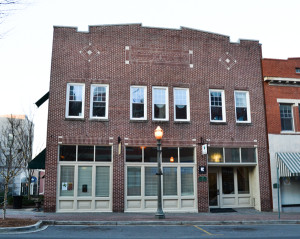
Image taken by R&R in 2015 – The original library was located here as early as 1888 and later by 1905 it served as the Rock Hill Opera House (second floor.) The RH Record on Nov. 21, 1907 – “Mr. H.E. White, architect, is moving his offices from the White Building to the rooms over the Roddey Mercantile Co. In the White Building lumber is being placed for repairing the hall for use as a lodge room for some of the lodges of the city.”
It is to be regretted that no deeds have survived for the period from 1852 to the 1870’s. The enterprise conducted on these premises was unquestionably the largest and most important business endeavor in early Rock Hill. We do not even know the name of the original owner of these lots. By 1858 the carriage factory was being operated by R. M. Kerr & Company, the partners being Captain Robert M. Kerr (another North Carolinian) and Robert Patton, a native of the Land’s-ford section of Chester District, S. C. By 1859 the firm was insolvent. After the War, Captain Kerr lived in Yorkville and was engaged in carriage manufacturing there. It is likely that he was associated in some way with the principal carriage manufacturer in Yorkville, Burritt Truman Wheeler, a New Englander who enjoyed a great deal of success in his sale of high-quality wheeled vehicles throughout the South.
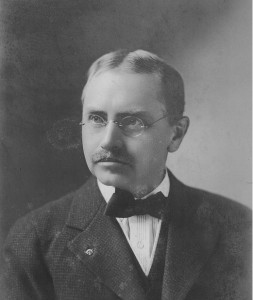
Mr. H. H. White of Rock Hill for whom the building is named.
Bad economic times in 1866-67 forced Robert Patton to sell out to William L. Roach, who was Captain Kerr’s brother-in-law. By the 1870’s Kerr and Roach were indebted in the sum of $10,000 to B. T. Wheeler, who had evidently financed their operations at Rock Hill. Wheeler had been in Yorkville since 1836. He died on July 18, 1886. In order to protect the financial interests of his sureties, Captain A. E. Hutchison and J. J. Roach, William L. Roach, (his brother), signed over his half interest in R. M. Kerr & Company to Hutchison and J.J. Roach. Kerr and W. L. Roach were, as we have said, in business in Yorkville in the 1870’s; and B. T. Wheeler foreclosed on their property in Yorkville in the year 1873. Kerr and Roach were industrious and frugal, but bad times in the country ruined their business.
The Yorkville Enquirer of January 9, 1873, says that a public auction was held in Yorkville at that time to dispose of the Rock
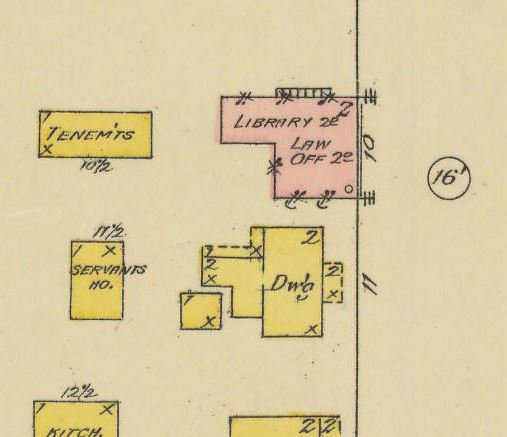
1888 – The Sanborn Map diagram shows the Rock Hill Library being housed on the second floor of the H. H. White Building at the corner of Elk Ave., and East Main Street.
Hill property of Kerr & Roach, bankrupts: (1) dwelling house and lot ($2625); (2) the Duff store-house lot ($1920); (3) the office lot ($800). All the above was sold to Captain A. E. Hutchison, one of Kerr & Roach’s principal creditors. Captain Hutchison also bought the livery stable lot which was a part of the Kerr & Roach assets. This lot, to the south of the lots that fronted on Main Street, faced Church (now Black) Street. The failure of Kerr & Roach resulted in Captain Hutchison’s becoming the principal landowner in downtown Rock Hill at that time. But there was no longer any carriage manufacturing taking place at that site. The various lots were rented out to provide an income for Captain Hutchison.43 In 1881 he put into operation a large cotton factory in Rock Hill, not far from the railroad depot. Captain Hutchison was one of the principal heirs of his wealthy brother Hiram Hutchison, financier, banker, and entrepreneur of New York City, who died in 1856.
Things have a way of changing. Within a matter of twenty years the cotton factory was out of business and Captain Hutchison himself was bankrupt. In order to satisfy his creditors he sold off everything he had except his residence in Rock Hill and the Hutchison farm near the Nation Ford on the Catawba River. In 1899 he sold the lots on Main Street to his nephew Major Andrew Hutchison White. From page 277 of York County Deed Book 18, we glean a helpful list of businesses that were occupying the Hutchison lots in downtown Rock Hill at that time: Sandifer Drug Store, Abe Moses, I. Blumberg (jeweler), the Armory building, the Library building, the Robertson House, The Enterprise Foundry & Machine Works (facing Church Street), and Westerlund’s Tin Shop. Blumberg occupied a lot measuring 30’3” x 120’. The Armory lot measured 60’3” x 120’. The 1884 building of the Rock Hill Public Library stood on a lot measuring 40’10” x 125”.
The Rock Hill Herald on March 7, 1903 reported, ” The old Armory building will undergo repairs and will again be occupied by the Catawba Rifles.”
One of the properties that Captain Hutchison did not sell to A. H. White was the Robertson House, which was the two-story frame residence that was built in the early 1850’s as the home for the owner of the carriage factory there. This lot was purchased in 1901 by Captain W. L. Roddey for $7,615. It faced on Main Street for a distance of 64’4”, and extended back about 217’. We give herewith what we know of this particular piece of property, from the 1850’s to the middle of the twentieth century. (It was the property of Captain A. E. Hutchison from the 1870’s to 1901.)
After the Civil War Major William L. Robertson rented the house and lived there, conducting what amounted to a hotel, called the Robertson House, as stated above. It was a well-known hostelry and was a gathering place for Rock Hill citizens on special occasions.

Historic Robertson home after being moved and restored on Fishing Creek, Bethesda Community, York County, S.C.
After the Robertson family moved in the 1880’s to their new home on the lower end of Johnston Street, the old Main Street house was rental property. The Herald on May 3, 1899 reported, “Sale by the Clerk of Court’s Office of the house and lot on the corner of Johnston Street and Elm Ave., known as the W.L. Robertson property. It was bought by A.H. Greene for $810.”
Among the residents over the next few years were D. H. Stevenson and his family, E. B. Rock and family, and Captain Edward Biggers Mobley and his family (1887). About 1888 the house, repaired and refurbished, was the residence if Dr. John William Fewell, first mayor of The City of Rock Hill. When Dr. Fewell’s widow moved out of the house, in the late 1890’s, various businesses rented the place, chief among which was Bailey’s Tin Shop, owned by G. W. Bailey and later John F. Bailey. The house was destroyed by fire on February 10, 1912. At that time it was the property of Mrs. W. Lyle Roddey.
A brick store building was erected on this lot by the Roddeys soon thereafter, for the use of the Roddey-Poe Mercantile Company. Eventually the location became the home of Belk’s Department Store. The writer well remembers the Belk occupancy of that important commercial site.
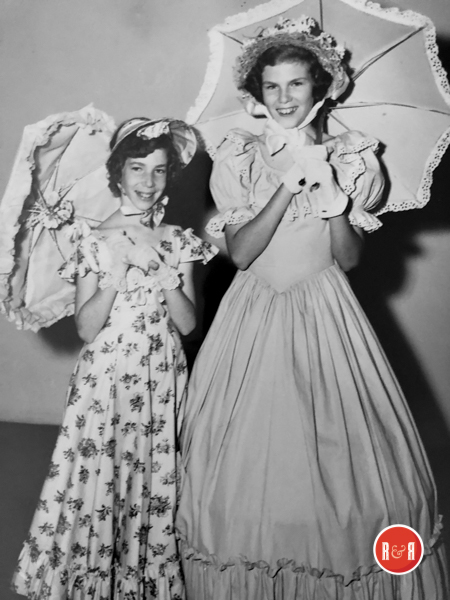
Kurtz children, Brenda and Judy, dressed for the RH Centennial. Courtesy of JKG 2021
A final note on the Robertsons. The remaining family moved to New York City in September, 1889, where they operated a shirtwaist factory (Major W. L. Robertson had died in August, 1896). He was a brother of Allen Robertson, Esq., early attorney in the Rock Hill section, and of Mrs. Rocinda R. Williams. In the latter years of the twentieth century, Wade B. Fairey purchased the old country seat of the Robertson family (south and west of Rock Hill), and with his father, Dr. Frank Strait Fairey, moved the house to a new site on Fishing Creek, and completely restored the house and created beautiful gardens to surround it. The author recalls the simple, chaste Early Federal lines that distinguished this fine house.
Another important building on the Kerr-Hutchison-White property was the structure erected in 1884 on the lot next west to the Robertson House. Rock Hill citizens formed a library association in the 1880’s, looking toward the creation of a public library for their town. The leader of the library movement was the Reverend J. Spratt White, who was so intent on having a public library that he leased from his uncle Captain A. E. Hutchison the lot next to the Robertson House (the lot fronted on Main Street c. 36-40’) and pushed forward the immediate erection
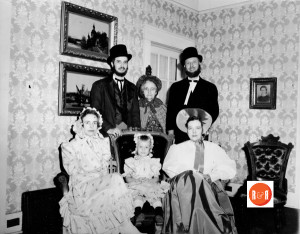
Mr. Howard Givens, who lived on Hampton Street was heavily involved in the management of the Belk Store in downtown Rock Hill. Note that many of these images are of Belk employees and Givens family members helping celebrate the city’s centennial in 1952.
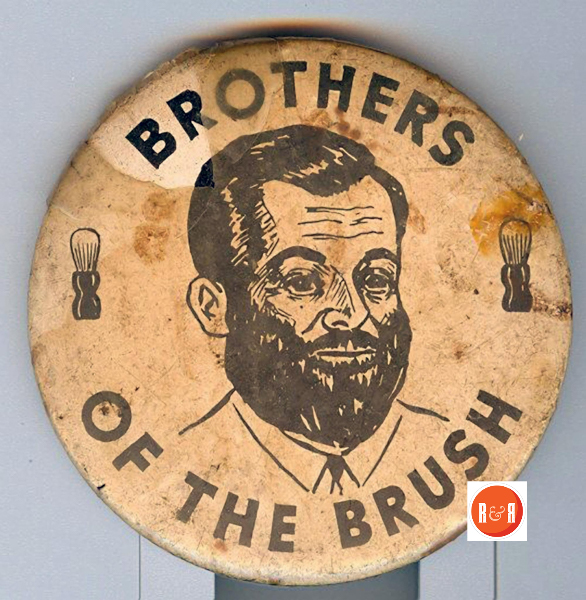
Rock Hill Centennial Celebration pin. Courtesy of the Ratterree Collection

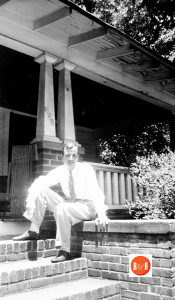 there of a large two-story building which would house the library on the first floor. The structure was completed and dedicated in 1884. This familiar downtown landmark stood until 1952, when it was razed to make room for a new commercial structure. The writer remembers that the Periwinkle Tearoom occupied some of the first floor in the 1930’s and 1940’s. In the 1980’s a dress shop, Eleanor’s, was housed there, along with several other commercial enterprises. The great fear of early Rock Hill merchants was fire. The downtown area of the town suffered three or four major conflagrations in the years from 1874 to 1898, as will be seen in a later chapter of this work. Captain A. E. Hutchison, one of the principal owners of downtown property, made a gift to the City of Rock Hill of an alley on the south side of Main Street, just to the west of the library building erected in 1884. The width of the alley was c. 25-30’. This firebreak existed in later years as Elk Alley (the Rock Hill Elks’ Lodge was once located on the west side of the alley, midway of the block). Captain Hutchison’s generous gift enabled the merchants to sleep more soundly than they had been accustomed to since the 1870’s. [Along the Lands Ford Road by Wm. B. White, Jr.]
there of a large two-story building which would house the library on the first floor. The structure was completed and dedicated in 1884. This familiar downtown landmark stood until 1952, when it was razed to make room for a new commercial structure. The writer remembers that the Periwinkle Tearoom occupied some of the first floor in the 1930’s and 1940’s. In the 1980’s a dress shop, Eleanor’s, was housed there, along with several other commercial enterprises. The great fear of early Rock Hill merchants was fire. The downtown area of the town suffered three or four major conflagrations in the years from 1874 to 1898, as will be seen in a later chapter of this work. Captain A. E. Hutchison, one of the principal owners of downtown property, made a gift to the City of Rock Hill of an alley on the south side of Main Street, just to the west of the library building erected in 1884. The width of the alley was c. 25-30’. This firebreak existed in later years as Elk Alley (the Rock Hill Elks’ Lodge was once located on the west side of the alley, midway of the block). Captain Hutchison’s generous gift enabled the merchants to sleep more soundly than they had been accustomed to since the 1870’s. [Along the Lands Ford Road by Wm. B. White, Jr.]
The RH Herald reported on April 13, 1882 – “On Wednesday of last week the borders at Robertson’s Hotel enjoyed a dish of new Irish Potatoes from the hotel’s garden.”
The Herald reported on Aug 17, 1884 – “That the library building is now under construct. Ground was broken last Monday and Mr. A.D. Holler, with his efficient workman will proceed rapidly. It will be brick, and 36′ – 40′, two stories. It is on the South side of Main Street, opposite the store of J.R. Allen and Company.”
The Herald reported on Jan. 11, 1896 – “That the nomination of Mr. E.E. Poag as Rock Hill’s postmaster by Pres. Cleveland has been announced. He has been assistant Postmaster for three years, the present postmaster, Col. Pride is a Republication and was appointed four years ago by Pres. Harrison.”
The Herald reported on June 9, 1900 – “The store room recently occupied by Mr. A. Moses is being repaired. It will now be occupied by Mr. I. Blumberg.” Later the Herald reported on Aug. 8, 1900 – “Mr. I. Blumberg is fortunate in the removal of his store to the stand he now occupies. The establishment is now much more attractive and the stock is displayed to fine advantage.”
The Herald reported on June 30, 1900 – “Mr. J.E. Johnson will occupy the store room on Main Street being vacated by I. Blumberg. Mr. Solomon Segal who has been a merchant before in Rock Hill, will occupy the store to be vacated by Mr. Johnson.”
The Herald reported on Aug. 18, 1900 – “Mr. J.L. Johnston has removed his stock of goods from Railroad Ave., to the storeroom formerly occupied by I. Blumberg.”
The Rock Hill Herald reported on Jan 31, 1916 contained an ad for: “People’s Trust Co., stating that we have good insurance and money to lend on property. Manager, Richard Fewell and Sec. Treasurer, Mr. C.L. Cobb.”
COMMENTS:
My cousin, Carolyn Horton Crimminger and her husband were there (at the Good Shop). They were so neat and she was my Mama’s brother, Reid Horton’s, daughter. My uncle Reid and his wife, Mattie Maye owned The Periwinkle Tea Room on Main Street. He was in the Army with Norman Rockwell, and he said Norman would sit and draw when he could. Anna S. Lemmon – July 2013

Advertisement from the 1938 Bearcat Annual
Note this group of lots consists of a large section of downtown property including what is today (2013) part of the City Club site, the old Elk Alley, and the White Building to the right of the open alley.
The Herald reported on Oct 7, 1894 – “Yesterday Rock Hill was connected by telephone with Fort Mill, Charlotte, Concord, Gastonia, Mt. Holly and other towns when the phones of the Western Electric Company were put in. The Rock Hill office is in the drugstore of Mr. M.H. Sandifer.”
The Herald reported Feb. 22, 1896 – “Julias and Henry Isea (Isear) of Georgetown have rented the vacant store in the Hutchison Block adjacent the P.O. and will open a dry goods and millinery store.” On Feb. 26, “A. Moses and Joseph Isear, comprising the firm of A. Moses and Company will open a first class dry goods store next door above the P.O. And later on March 11, an ad ran for the store stating – The Bon March, one door south of the P.O., the grand opening is this week and includes dry goods, notions, and fancy goods. Part of Abe Moses and Company.
The Rock Hill Journal reported on Nov. 23, 1901 – “A fire at the building belonging to Major A.H. White on Main Street, located in the building are the Sadler Restaurant, Frew’s Undertaking Parlor, and the Rock Hill Post Office. Little damage was done to the PO besides water damage. The Catawba Riffle Co., whose armory is on the second floor of the building in the space formerly used as the opera house, lost its uniforms and other furnishings. The fire started in the rear of Sadler’s restaurant. (The Journal reported, “Owing to the tardiness of the fire dept., and it’s absurd lack of discipline, the damage was much worse than it should have been.)
The Rock Hill Journal reported on Nov. 27, 1901 – “S.T. Frew is Supt. of the RH Waterworks and Chief of the Fire Dept. He also operates and undertaking parlor in the A.H. White building. ”
The Herald of March 25, 1903 announced, “P.D. Barron, Esq. has decided to locate in Rock Hill and practice law. He is a graduate of S.C. College (in 2020 USC) in Columbia and know as Press.”
The Rock Hill Record reported on March 15, 1904 – “J.W. McFadden has moved his office from the room over McElwee’s Store to the front of S.T. Frew’s place. P.D. Barron, Esq., will move into the room vacated by Mr. McFadden. He will also occupy the adjoining room, formerly used by Col. J.J. Waters as a office.”
OLD LANDMARK WIPED OUT BY A FIERCE FIRE (The following appeared in The Record – February 12, 1912.) “Saturday night just at 9 o’clock an alarm of fire was sounded and the old Robinson- Hutchison-Fewell house on East Main St., occupied by the Bailey’s tin shop, Pinauses’ fruit stand and a negro pressing club, was found to be on fire. The fire company responded promptly, but had some little trouble in getting coupled up, a blinding snowstorm being on at the time, and by the time they had a stream playing the fire had gathered considerable headway. One stream was turned on the burning building, while another was put on the Library building to keep it from catching…………. A large crowd quickly gathered on the streets despite a howling windstorm and fierce snowstorm… when it was seen that there was no chance to save the old building thousands of cheers rent the air, showing the delight of the people at seeing this old building pass away. The insurance in this building which belonged to Mrs. W. L. Roddey, amounted to $750.”
The Record reported on April 28, 1927 – “The White Estate Building demolition is completed. In this building twenty one years ago, the writer began the publication of the Record (1906). The post office was on the ground floor, the Record continued there for several years until a hostile city council condemned the building. The late Capt. W.L. Roddey, a strong friend of the Record, came forward and offered to build a home for the Record, a nice two story building on Record Place.”
Click on the More Information > link found below the picture column for additional data and map of the downtown area in the 1850’s, as well as, the Main Street Database. Also see Rock Hill’s Early History by J.S. White, under this section.
Click HOME to return to the numbered site tour of Rock Hill’s downtown.
[Information provided via Along the Land’s Ford Road – Vol. I, 2008 by William B. White, Jr.]
—————————-
Joshua Ward Westerlund – A contribution to R&R by Paul Gettys, 2015
Mr. Westerlund (1851-1930) was a roofer or “tinner” who moved to Rock Hill in 1874 from Charleston. He was active in his trade for a number of years, and we have records of his work on several prominent buildings in Rock Hill.
Joshua Westerlund was the son of Captain Charles F. Westerlund (1817-1864) and his wife Martha. Charles Westerlund arrived in Charleston in 1847, an immigrant from Sweden. In the 1850 Census, he is listed as a “Master Mariner” and in 1860 as a “Sea Captain.” The 1854 Charleston City Directory lists the family at 6 Savage Street. Martha Randal King Westerlund was born in Charleston. The couple had at least four children, of whom Joshua was the youngest. Charles Westerlund served in the Civil War. One source says that he was in Company F, South Carolina Ist Infantry (Charleston Reserves) and another says he attempted to run the Union blockade of Charleston with his cutter named Martin. He was killed in an unknown action on November 2, 1864. He is buried in Magnolia Cemetery in Charleston.
Joshua Westerlund is listed in the 1870 Census in Charleston and had recently married in Summerville to Eudora Jane Faris Westerlund. He is recorded as a tinner, and he and Eudora were living with his mother and two sisters. Joshua and Eudora and son Charles moved to Rock Hill in 1874. In the 1880 Census, he is listed as a tinner. Based on information currently available, the couple eventually had eight children. Son Charles (1871-1940) was also a tinner in the 1880 Census, although only nine years old. Charles would later go on to have a plumbing business and become a plumbing inspector for the City of Rock Hill. Two sons died at a young age: Oscar Ward (1874-1880) and Fred London (1884-1901). Daughter Etta Ward Westerlund married Efrom F. Fraley, who worked with his father-in-law as a tinner.
On January 14, 1891, the Rock Hill Herald reported that the selection of a candidate for the position of “winder and repairer of the town clock” was being considered by the City Council. The position paid $35 per year. J. W. Westerlund was one of two persons being considered. However, George Beach, a local jeweler, was selected.
The Herald reported on Nov. 28, 1896 – “Through the efforts of Rev. H. Bascombe Browne a large sum has been raised by the members of the Lodge of the Knights of Pythias, Knights of Honor and Woodman of the World to refit the hall used by the organizations. A handsome carpet has been ordered through R.T. Fewell and Co., and new furniture will be purchased.
The RH Record reported on Aug 22, 1907 – “W.J. Caveny, who for a number of years has held the position of sanitary inspector for the city has resigned and has bought the Acme Suspender Factory from Mr. C.W. Frew. Mr. A.R. Kimbrell is in the deal with him. He has been with Freidheims for a number of years.”
The RH Record on June 8, 1908 stated one of the rooms of the Old Robertson House on Main Street is being fitted up and will be occupied by some Greeks, who will open a fruit stand.”
We have records of Mr. Westerlund being involved in the construction several important buildings in Rock Hill, including the Friedheim Building, 113 East Main Street (1898), and the installation of a slate roof on the home of A. C. Izard at 239 East White Street (1897). In 1899, the Westerlund Tin Shop was located on the Hutchison property between Main Street and Black Street. In 1914, his shop was described as opposite the freight depot, which would place it on Railroad Avenue (later Trade Street).
In the 1908 City Directory, the family is shown as living at 319 Green Street. In the 1910 Census, they are also on Green Street, and the household consists of Joshua, Eudora, and their daughter and son-in-law Etta and Efrom Fraley. An advertisement in the Rock Hill Herald on July 3, 1914 described J. W. Westerlund as a “General Metal Worker” and listed his skills as tin and slate roofing, galvanized shingles, gutter, and galvanized iron cornices.
By 1922, son-in-law Fraley had taken over the business. His advertisement in the City Directory of that year says that he is “Successor to J. W. Westerlund” and is a General Metal Worker. He advertised galvanized iron cornices and tin and slate roofing. His business was located on Chatham Avenue near White Street.
Eudora died in 1920. When Joshua died in 1930, he had been living for several years at 217 West Main Street in the household of the Fraleys. Survivors included daughters Mrs. J. L. Neville of Savannah, Mrs. T. M. Young of Asheville, and Mrs. Fraley, and sons Charles A. Westerlund of Rock Hill and A. M. Westerlund of Edgemoor. At his death, the Herald (July 11, 1930) described Mr. Westerlund as “An esteemed citizen…among what might be termed the old citizens of Rock Hill, one fully conversant with its early history, which he loved to recount with the interest natural to one who had lived through the formative years of the town. He was remarkably well-read, and possessed a library at one time which might well be the envy of the literati.” The funeral service was in the Fraley home, and was conducted by Rev. W. P. Peyton of the Episcopal Church of Our Saviour, where Westerlund was a long-time member. The burial in Laurelwood Cemetery was in charge of the Masonic lodge.
Stay Connected
Explore history, houses, and stories across S.C. Your membership provides you with updates on regional topics, information on historic research, preservation, and monthly feature articles. But remember R&R wants to hear from you and assist in preserving your own family genealogy and memorabilia.
Visit the Southern Queries – Forum to receive assistance in answering questions, discuss genealogy, and enjoy exploring preservation topics with other members. Also listed are several history and genealogical researchers for hire.
User comments welcome — post at the bottom of this page.
Please enjoy this structure and all those listed in Roots and Recall. But remember each is private property. So view them from a distance or from a public area such as the sidewalk or public road.
Do you have information to share and preserve? Family, school, church, or other older photos and stories are welcome. Send them digitally through the “Share Your Story” link, so they too might be posted on Roots and Recall.
User comments always welcome - please post at the bottom of this page.




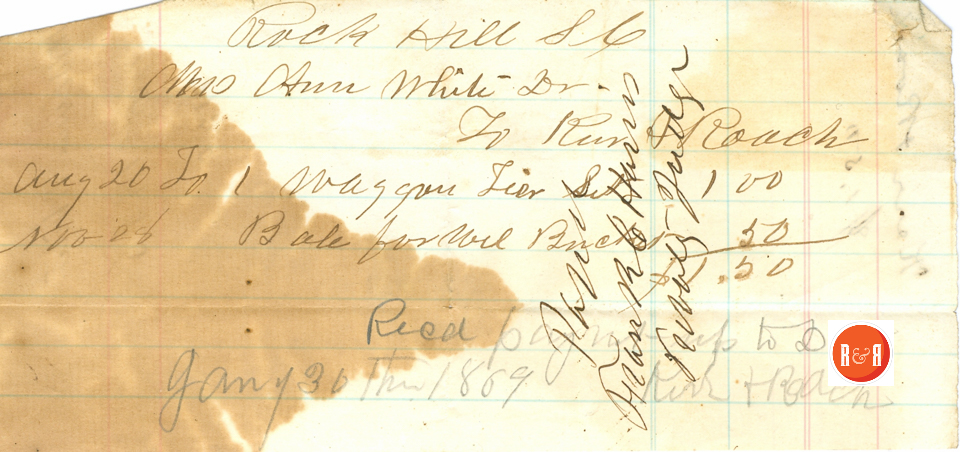





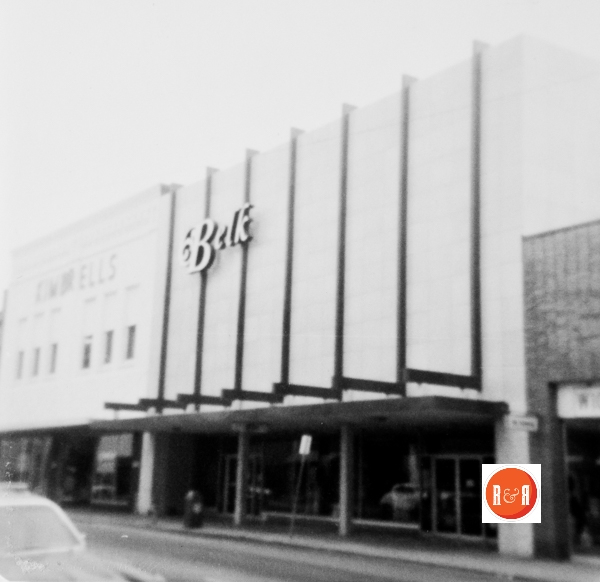










Share Your Comments & Feedback: